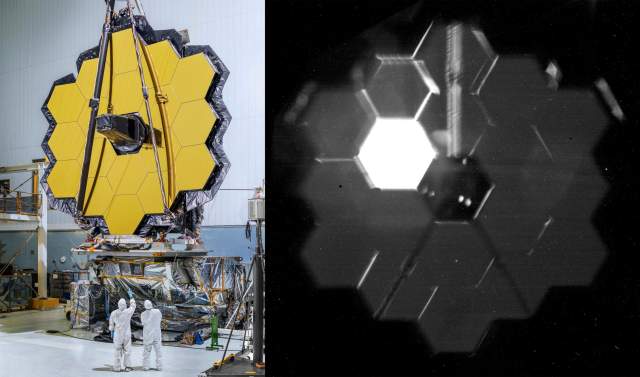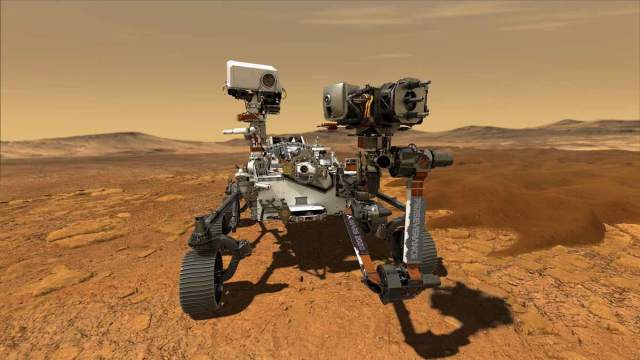The question “Are we alone?” has echoed through human history, right? It’s like this big, haunting whisper against the massive backdrop of space. For ages, it was something people only talked about in philosophy classes or dreamed up in sci-fi novels. But now? Well, things have changed, a lot. The search for life beyond Earth isn’t just a wild idea anymore; it’s become one of the most exciting and fast-moving areas in science. With every new discovery and tech breakthrough, it feels like we’re inching closer to finally getting an answer. So, are we actually closer than ever to finding life out there? Let’s dig into that!

The Changing World of Astrobiology
Not too long ago, if you brought up looking for alien life in a serious way, you might’ve gotten some funny looks even from scientists. But wow, how times have changed. Astrobiology has grown into this super vibrant field that people totally respect now. It’s not just about staring at the stars, it pulls together biology, chemistry, geology, astronomy, and planetary science to try to figure out where life comes from and where else it might exist.
And seriously, astrobiology has been on fire lately especially as we’ve headed into 2024 and beyond. Instead of just guessing if other planets could maybe support life someday, we’re actually spotting worlds that really look promising. Thanks to missions like Kepler and TESS, the number of confirmed exoplanets, planets orbiting other stars, has just exploded. A bunch of these planets sit right in their stars’ “habitable zones,” which basically means they might have liquid water, the stuff all known life needs.
Our New Cosmic Toolkit: How We’re Looking for Life
So how are we actually hunting for signs of life these days? Honestly, the tools are nothing short of amazing.
Supercharged Telescopes: Seeing Farther Than Ever
If you want to find habitable worlds or peek at what’s in another planet’s atmosphere, telescopes are your best friends. They’ve become our cosmic detectives! Ground-based giants like the Extremely Large Telescope (ELT) and space wonders like the James Webb Space Telescope (JWST) are letting us see farther and clearer than ever before.

Take JWST: this thing is wild. It can actually look at starlight passing through a distant planet’s atmosphere and break down what chemicals are floating around there. Imagine being able to spot oxygen or methane on a planet light-years away! These could be clues, what scientists call biosignatures that something alive is churning them out.
Probes: Our Robotic Explorers
Telescopes give us the big picture from far away but probes get up close and personal. Think about Mars missions like Perseverance; they’re actively searching for ancient signs of microbial life right now.
And just wait, future missions will be even cooler. We’re talking plans to send spacecraft to Jupiter’s moon Europa or Saturn’s Enceladus. Both moons probably have huge oceans under their icy shells and who knows what could be swimming around down there? Just thinking about it keeps astrobiologists up at night (but honestly, in a good way).
AI & Machine Learning: Sifting Through Mountains of Data
There’s so much data coming in from telescopes and probes that no human team could keep up on their own. That’s where artificial intelligence steps in AI and machine learning algorithms can chew through massive piles of information super fast. They pick out weird signals or patterns that would take humans years to notice or maybe we’d miss them entirely! This is especially key for SETI projects that are listening for any hint of an artificial signal from distant worlds.
Where Are We Looking? Hot Spots for Alien Life
Space is huge (no surprise there), but we do have some favorite places to look.
Mars: Still a Top Contender
Mars has always captured our imagination when it comes to alien life, it feels close enough to touch yet mysterious enough to fascinate us forever. Decades of Mars exploration have shown us that it used to be warmer and wetter, a much better home for life than today’s cold desert world. Rovers like Perseverance are busy scooping up rocks and soil that might hide fossilized microbes from billions of years ago. Finding proof even just fossilized bacteria would be absolutely huge.

Icy Moons: Oceans Under Ice
But let’s not forget those moons! Europa (orbiting Jupiter), Enceladus (around Saturn), and even Titan with its crazy methane lakes, they all offer mind-blowing possibilities. Europa and Enceladus probably have global oceans under their ice, kept warm by tidal forces flexing them like stress balls. On Earth, similar underwater vents are absolutely packed with strange forms of life that never see sunlight, so why not elsewhere?
Exoplanets: The Real Game Changer
The discovery of thousands of exoplanets has flipped everything we thought we knew about planets outside our solar system. Planets turn out to be super common and plenty sit in those “Goldilocks” zones where conditions might just be right for life as we know it. We can’t take selfies with these worlds yet (they’re way too far away), but we can study their atmospheres for telltale signs that something alive is lurking below those clouds.
What Counts as Evidence? Biosignatures Explained
Okay, so what exactly are scientists hoping to find? It’s not like we expect a little green alien waving back at our cameras (though wouldn’t that be cool?). Most searches focus on indirect evidence called biosignatures.
- Unusual amounts or combinations of gases like oxygen or methane.
- Weird pigment signatures like Earth plants reflecting certain wavelengths because of chlorophyll.
- Complex organic molecules you wouldn’t expect without something living making them.
But hold up, it’s tricky! Methane can come from volcanoes too, not just cows or microbes so scientists need lots more context before shouting “Eureka!” Ruling out non-biological explanations is half the battle here.
SETI: Listening for E.T.
Astrobiology mostly goes after microbes or simple organisms but SETI takes a different route: it listens for signals from intelligent civilizations.
SETI technology has taken some serious leaps forward lately with super-sensitive radio dishes and powerful computers scanning more sky than ever before for anything artificial-sounding. Projects like Breakthrough Listen are casting the widest net humanity’s ever thrown into the cosmic ocean.
Still… silence so far. This “Great Silence” is what scientists call the Fermi Paradox: if intelligent life should be everywhere… why haven’t we heard anything? Maybe advanced civilizations don’t last long; maybe they’re using tech we don’t even know exists; or maybe we’re still tuning our radios wrong! What do you think, is someone out there waiting for us to listen differently?
What Happens If We Find Something?
Imagine waking up one morning and seeing headlines about discovered alien microbes or even hearing a real message from another civilization!
Finding even tiny Martian bacteria would rock our understanding of biology forever, it would prove Earth isn’t unique after all and suggest that life pops up wherever it can across the universe.
Now if SETI picks up signals from an advanced civilization? Wow that would rewrite history books overnight! It would change how we see ourselves completely, not just scientifically but philosophically too.
So… Are We Getting Closer?
So where does all this leave us? With sharper telescopes, smarter robots heading off-world, AI scanning mountains of data, more habitable exoplanets on our radar every year… well, it sure feels like we’re closing in on something big.
Honestly, most experts believe finding signs of simple extraterrestrial life, in our solar system or elsewhere, isn’t so far-fetched anymore; some say it could happen within decades! As for intelligent aliens… well, that search might take longer but who knows what tomorrow will bring?

The Adventure Continues
Searching for extraterrestrial life is one wild ride, a quest that brings together people from all over the globe with one shared dream: figuring out if we’re truly alone in this enormous universe.
We don’t have a final answer yet but our tools keep getting better; our questions get sharper; our curiosity never fades. Whether it ends with a fossilized Martian microbe or an unmistakable signal from another star system, the next chapter promises jaw-dropping discoveries.
So what do you think? Will humanity find proof in your lifetime? One thing’s certain, the search isn’t slowing down anytime soon… and yeah, maybe now more than ever before, we really are closer than ever to an answer.
